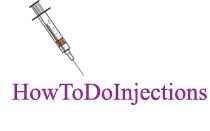- Joined
- Nov 15, 2006
- Messages
- 4,923
A science-based review of the world's best-selling book on aging
by Charles BrennerDear Editor
Herodatus, the father of ancient Greek history, recorded lore about what has been termed a fountain of youth 2500 years ago. Innumerable adventurers searched for the legendary waters and countless hucksters sold the dream and/or known false promises to enrich themselves. While age reversal is an old grift, the latest version has reached new heights of feigned legitimacy and hype.
Lifespan: Why We Age and Why We Don't Have To, written by Harvard scientist David A. Sinclair with assistance of journalist Matthew D. LaPlante (Sinclair & LaPlante, 2019), proposes two counterfactual questions on the back cover: “what if aging is a disease—and that disease is treatable.”
The second counterfactual attempts to neutralize the first in the sense that if there were a gene or a pill that could treat aging, one could be convinced that we do not have to age. In such a world, people could choose to receive longevity medicine to reverse the disease called aging. There are similar rhetorical setups in Dr. Sinclair's public presentations: what if you could keep your grandparents alive and healthy for another hundred years so that they could meet your great grandchildren? These dreamy counterfactuals transport people away from three basic facts about aging that are not addressed in the bestseller.
First, all vertebrate animal species have a distribution of natural lifespans that are limited by their gene sets—human longevity appears top out at about 120 years (Gavrilova & Gavrilov, 2020).
Second, animal gene sets evolved to allow individuals to acquire food, avoid predation, find mates and successfully reproduce. Long-lived species like humans also provide a substantial investment in caretaking of offspring until they can obtain food, avoid predation and reproduce for themselves. The advantages conferred to youth by parents mean that genetic selections for parental health are extant in caretaking species. Such genetic selections for post-reproductive health are not extant in non-caretaking species (Brenner, 2022a).
Third, for animals that can mate multiple times, longevity is an emergent property of the ability to continue to do all the things required to reproduce and promote the success of offspring. Animal gene sets have been subject to genetic selections for guile, strength and famine-resistance but have not been directly selected for longevity because, as a rule, animals are able to successfully reproduce when they are relatively young (Rose, 1994).
Think of it this way: if foxes can reproduce at 6 months, what genetic selections are present for them to live for six years? The ones that live for 6 years might reasonably produce 6 times as many offspring as those who perish in a year but those who die in a year would still contribute to the gene pool so long as they are successful at reproducing. Indeed, experiments done in flies that were selected for the ability to reproduce late in life suggest that hundreds or thousands of genes, not single dominantly acting genes, are modified to allow every organ system to function better over time in the resulting long-lived flies (Burke et al., 2010). However, animals in the wild are under little to no direct genetic selection for longevity beyond that to produce reproductive success.
A more fanciful science of aging is presented in Lifespan. According to the book, Sinclair discovered genes called sirtuins that extend lifespan in organisms from yeasts to humans and he found sirtuin activators in red wine and elsewhere. Why do we age? Sinclair's theory is poor information transmission that can be fixed by greater sirtuin function. Why we do not have to age? He says that we can take sirtuin activators every morning and soon, we'll take chemicals that will safely reprogram our genes to restore youthful vigor. Readers can also sign up to measure their age (there will be a subscription for that) and join the author's community of age-hackers who will reverse aging together.
With the book having been translated into dozens of languages, expanded into a podcast, social media outlets, a newsletter, and a tease of sequels, it is high time to examine the book's claims.
Is aging a disease? Age is clearly a risk factor for a wide variety of diseases but aging is not itself a disease. The most powerful mutations ever identified—from worms to rodents—that can extend lifespan inactivate genes controlling growth (Bartke, 2021). Worms and mice with disruptions in these genes are small, infertile, and very long lived, thereby establishing the connection between growth and development and the process of aging. Indeed, Sinclair has voiced support for the idea that aging begins shortly after the fertilization of eggs. Thus, to say that aging is a disease is to pathologize life itself.
Is aging treatable? In the sense that the rate of aging can be modified by genes and the environment, yes. However, aging is easy to accelerate, i.e. by smoking, overweight, infectious diseases and other factors, and much harder to slow. Caloric restriction extends animal lifespan when compared to caged animals with constant access to food. However, it is more accurate to say that unrestricted access to food is a life-shortening condition that is unlike conditions in the wild to which animals are adapted (Sohal & Forster, 2014). To be sure, lifestyle changes that improve fitness improve people's health trajectory such that a person can go from an aging-worse lifestyle to an aging-better lifestyle. Getting healthier is not age reversal though.
Do sirtuins extend lifespan in yeast, invertebrates and vertebrates? Has Sinclair discovered sirtuin activators? Based on 25 years of work by academic and industrial investigators, the clear answer to both questions is no (Brenner, 2022b).
Whereas Lifespan claims that sirtuins are dominantly acting longevity genes from yeast to humans (Sinclair & LaPlante, 2019), analysis of the work reveals that in yeast, sirtuin genes help 1 in 5 million cells live longer in one model of aging whereas they shorten lifespan for the entire culture (Brenner, 2022b). Early reports of sirtuins extending lifespan in invertebrates could not be independently replicated. In 2011, researchers from 7 institutions published together that sirtuin genes do not extend lifespan in worms or flies (Burnett et al., 2011). We learned in 2016 that, just as it does in yeast, the fly sirtuin gene antagonizes lifespan extension in conditions of dietary restriction (Slade & Staveley, 2016). While all the positive results made global headlines and are described in Lifespan, the negative results have not been amplified by mass media.





















































































